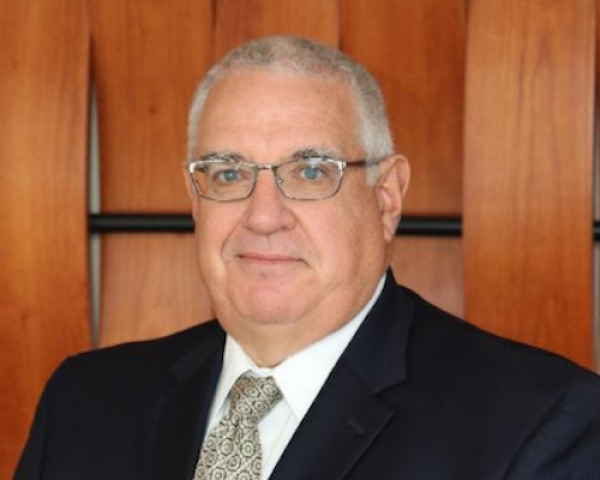KEY TAKEAWAY:
--When contemplating reinsurance, consider the following best practices:
- Stay profitable by managing your risk profile.
- Keep an eye on the profitability of your reinsurers.
- Build a stable of reinsurance contacts and get to know them personally.
- Don’t shop only on price. Think long term.
- If you’ve had a series of CAT losses, prepare discussion points and arguments against rate or retention changes--why those losses are blips rather than the beginning of trends.
- Work your reinsurance program throughout the year, not just at renewal.
----------
The unprecedented wildfire in Hawaii and the tragic devastation it has left in its wake is the latest catastrophe to wreak havoc and devastation within our communities, and by extension on the insurance industry. Insured losses related to the natural catastrophe that has killed more than 100 people to date and burned roughly 2,200 acres and 3,500 buildings is projected to be the second largest insured loss ever recorded in Hawaii. The insurance industry will respond as it also does -- quickly and efficiently and, in the process, return to insureds billions in loss payments to help them recover and rebuild. Unfortunately, CAT events like this, including hurricanes, wildfires and floods, are hitting our communities and the insurance industry hard. Combined with other economic factors, they are making reinsurance either impossible or difficult to secure.
So, what’s in store for reinsurance, and what does it mean for carriers looking to place risk? Taking a good look at what’s causing prices to rise and how capacity has been affected can help to shed some light on the issue. A deeper understanding of what’s causing this market tightening also uncovers steps carriers can take to ensure they remain attractive to reinsurers, keep costs down and sustain capacity.
The Origins of Today’s Hard Market
Last year, Hurricane Ian crumpled Florida with $60 billion in insured losses. But it’s been years of costly CATs in the form of hurricanes, wildfires and floods that have contributed to challenges in today’s insurance marketplace. P&C carriers were paying out enormous losses and passing them off to the reinsurance marketplace. At the same time, economic influences such as inflation and rising interest rates are exacerbating the situation. As a result, carriers and reinsurers are taking a step back, with some exiting the market entirely.
It’s not just the economic climate and recent onslaught of CATs that are driving insurers and reinsurers away, causing them to boost rates or rethink terms and conditions. For example, the retrocession market has become a virtual ghost town. Investors have largely left this market, which allows for yet another layer of risk transfer, and are seeking better returns on their investments from the fixed income and equities markets. While we are seeing some potential changes in this market, they should not yet be considered a trend.
As the economic climate has changed, so, too, have agency and policyholder attitudes toward insurance to value. While policyholders, and agents to some degree, were once complacent when it came to making sure properties were adequately insured to value, CATs and rising inflation are leading policyholders to request and insurers to demand an increase in the value of their property on their policies. Agents have also come to the realization that they could be found negligent under an errors and omissions exposure if they failed to bring their client’s attention to rising rebuilding costs. In the past, insurance companies were underpricing business and relying on reinsurers to share in the risk. That’s no longer the case.
See also: How Cedents Can Win Reinsurance Race
The View From the Carrier
From our perspective at Pennsylvania Lumbermens Mutual Insurance (PLM), a carrier in the wood niche, the reinsurance market was fairly solid in the spring of 2022, but change was rumored to be on the horizon. Capacity issues were brewing, compounded by major losses. By late summer or early fall, reinsurers were signaling they were having problems in terms of profitability, and we knew the coming renewal season on the property side would be challenging.
In late 2022, we started to feel the impact. Quotes from many of our reinsurance partners were coming in unprofessionally late. We also saw changes to our terms and conditions coming in at the last minute. It was a very different and chaotic reinsurance marketplace. Prices surged dramatically, and reinsurance partners we had worked with in the past would no longer provide the retentions we historically had in place. They were no longer interested in assuming the same levels of risk. While we expected pricing and capacity to be a problem, we did not foresee the quotes coming in late or last-minute changes to terms and conditions. For us, this was problematic, as we send our renewal quotes out 30 to 45 days prior to expiration in many cases to comply with different state regulations. Because the reinsurers had delivered terms and conditions late, we did not have the information necessary to really understand the cost structure on our end before that 30 to 45 days.
Fortunately, as a mutual insurer, PLM does not have to make short-term decisions. We do not have to report our quarterly results to Wall Street. We can take a longer-term perspective, and we know our niche. As a specialty insurer, we are good at what we do, and we can demonstrate that. While reinsurers might traditionally run away from a high-severity business like ours, for those looking to back front-line underwriters, we’re an attractive partner.
Finding Value in a Year-Round Strategy
In a tumultuous market like this, it’s critical not to take your foot off the gas. We work on our reinsurance program throughout the year. We visit our existing reinsurers here in the U.S., and in England and Germany, sharing our results and talking about what is going on in the marketplace.
At the same time, we work to identify new reinsurers. We are always talking to reinsurers, trying to interest them in taking a “watch line,” where they would take maybe 1% of our property program or property CAT program just to get a feel for what it looks like and how we do things at PLM.
Thinking ahead is critical for us. Those insurers that fail to plan ahead and come to their reinsurance renewal unprepared may see their rate is up 20% or more. They must make up for that increase with their own rate increase. Homeowners insurers, for example, have to seek approval from their state insurance department, and that can take time, in some cases a considerable amount of time. We have seen some resistance from certain states in the approval process. As a result, some of these states are seeing carriers constricting their willingness to write new business or ceasing to write new business entirely.
Smaller insurers that fail to plan ahead may have to take on reductions in retention ratios, and that can become difficult to handle. Small mutual and small stock companies rely on reinsurers, and they need to stay on top of their relationships or they could come up short. I’ve talked to others who have said there is no way they can be profitable as a company this year or next year because of the cost of their reinsurance. We at PLM do not feel that way; we are committed to finding a path to profitability without assuming inappropriate increases in risk.
See also: A Breakthrough in Wildfire Safety
Looking Ahead
While I might like to say the reinsurance market is turning a corner, we are only partially through the 2023 hurricane season, and no one can pretend to know if reinsurance pricing will remain high or even spike again. Smart insurers will be prepared.
One of the best ways to prime for another challenging renewal season is to put yourself in the shoes of the reinsurer. They’ll want to see that your company is profitable and not only that you made a good return but that you protected your reinsurers at the same time. You’ll want to convince them that you are in this for the benefit of both companies.
At a high level, when contemplating reinsurance, consider the following best practices:
- Stay profitable by managing your risk profile.
- Keep an eye on the profitability of your reinsurers.
- Build a stable of reinsurance contacts and get to know them personally.
- Don’t shop only on price. Think long term.
- If you’ve had a series of CAT losses, prepare discussion points and arguments against rate or retention changes--why those losses are blips rather than the beginning of trends.
- Work your reinsurance program throughout the year, not just at renewal.
Some industry experts I’ve spoken to feel that today’s reinsurance issues are a one-time blip. I don’t think that’s the case. Regardless, carriers need to think about how they will approach their reinsurance partners and what those reinsurers will want to see from them, as well as the types of rate increases and terms and conditions they are willing to accept.
Reinsurance is a necessary component of what we do. Let’s understand how we can best work together to move our industry, as well as those we protect, forward.







